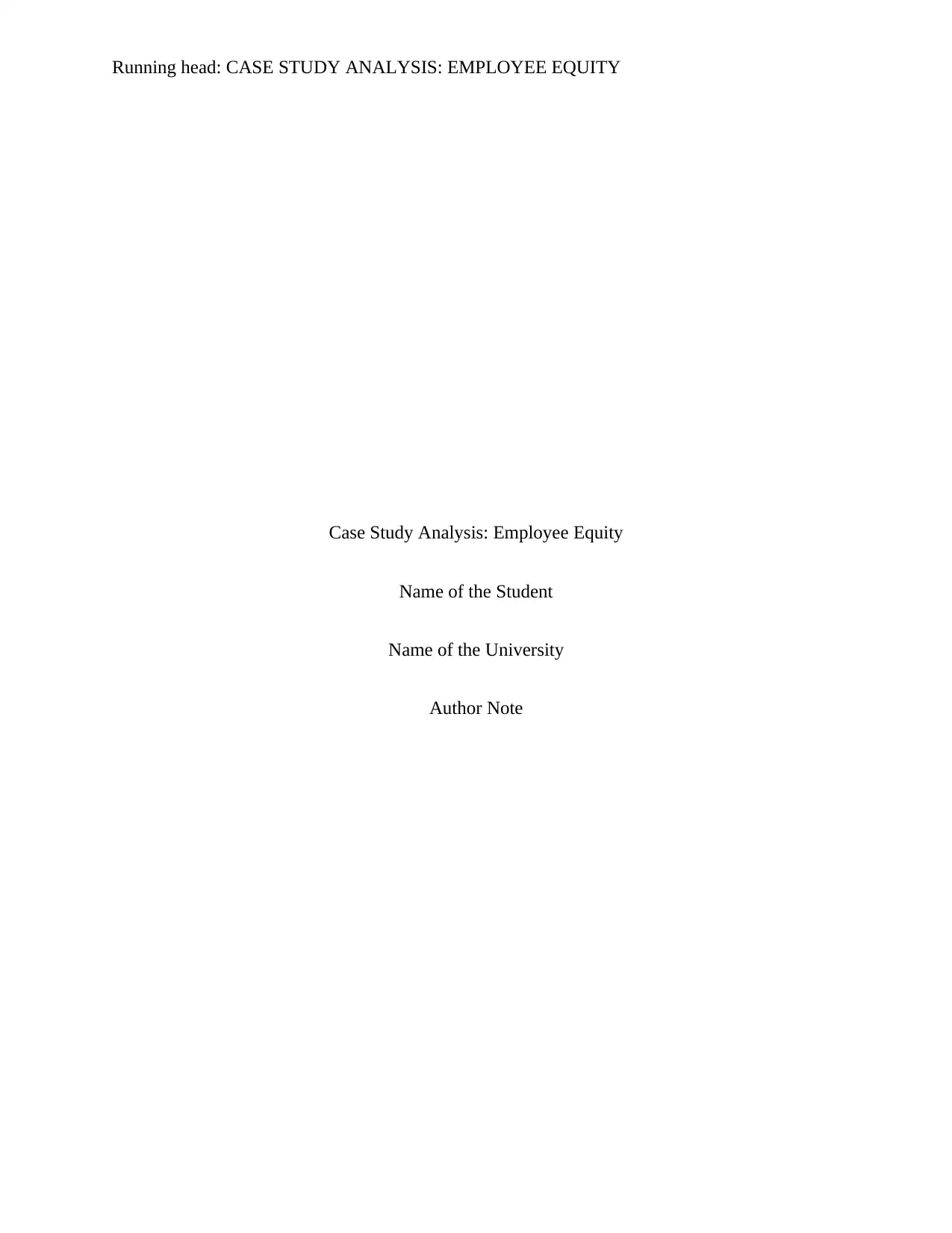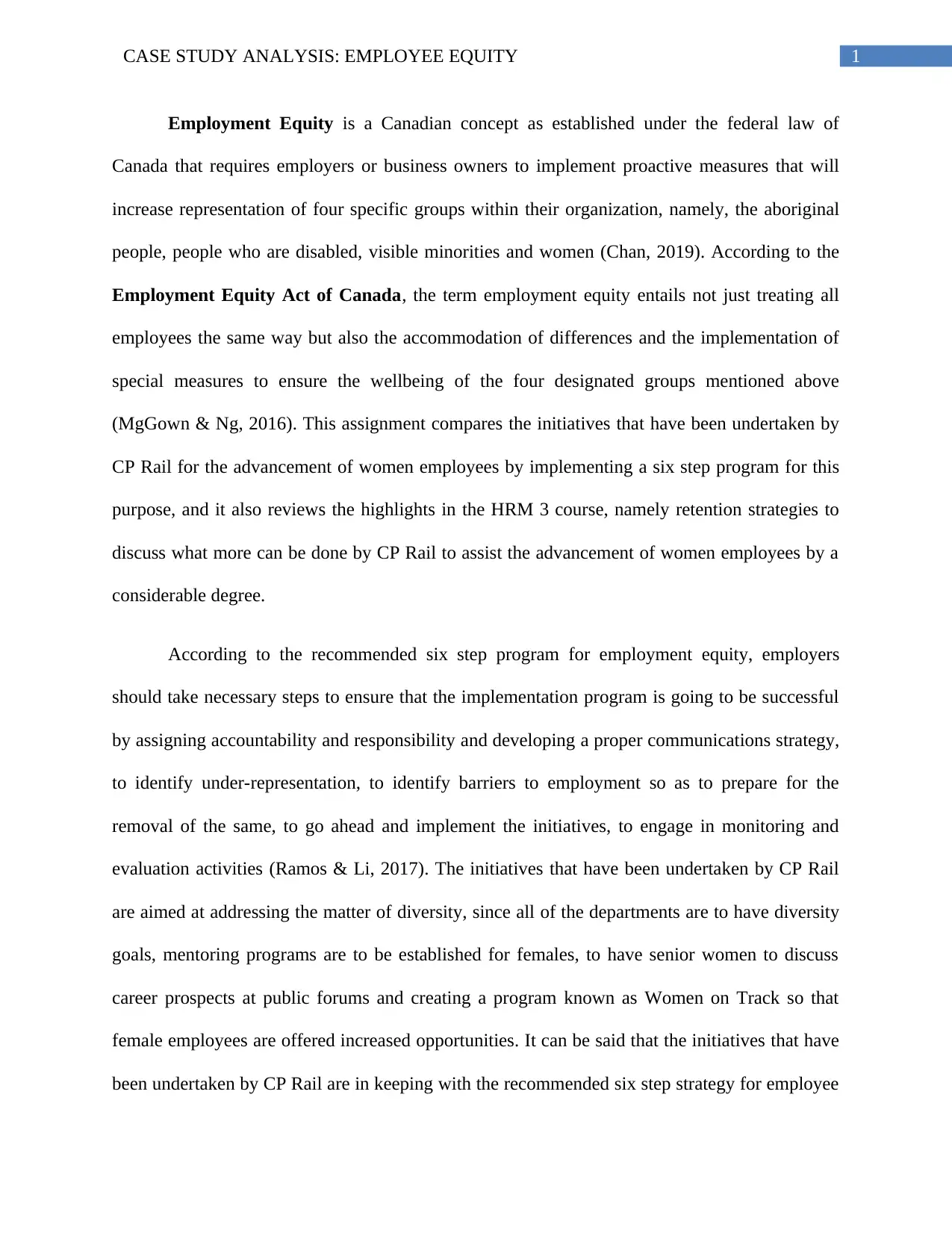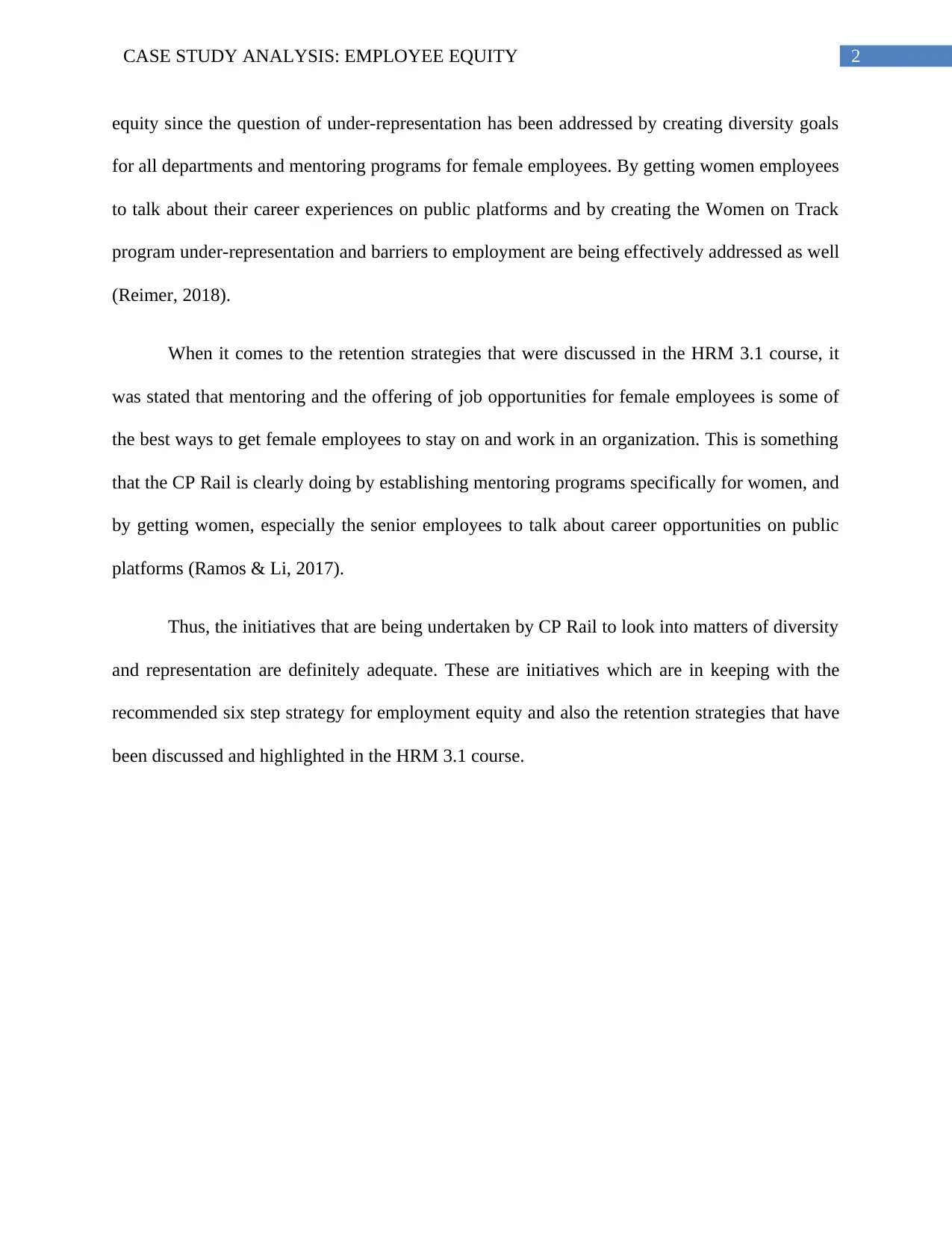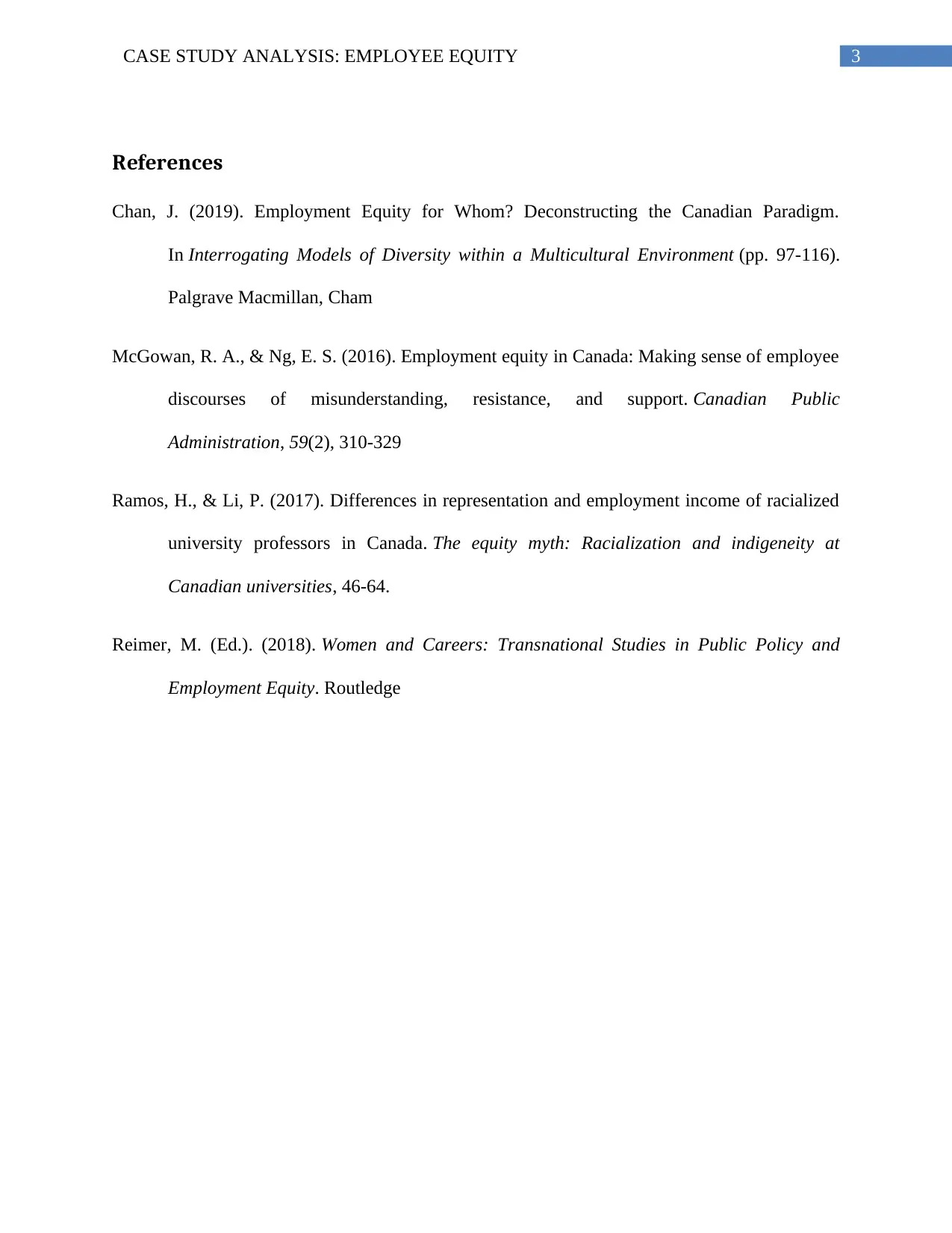Employee Equity and Retention Strategies at CP Rail: Case Study
VerifiedAdded on 2022/08/24
|4
|741
|21
Case Study
AI Summary
This case study analyzes CP Rail's initiatives to advance women employees, comparing them to a recommended six-step program for employment equity and retention strategies discussed in HRM 3.1. The study examines CP Rail's implementation of diversity goals across departments, mentoring programs, public forums for senior women to discuss their career paths, and the Women on Track program. The analysis highlights how CP Rail's actions align with the six-step program, addressing under-representation and barriers to employment. Furthermore, it reviews retention strategies from the HRM 3.1 course, emphasizing the importance of mentoring and job opportunities for female employees. The study concludes that CP Rail's initiatives are adequate but could be enhanced by considering additional strategies to further support the advancement of women employees.
1 out of 4





![[object Object]](/_next/static/media/star-bottom.7253800d.svg)